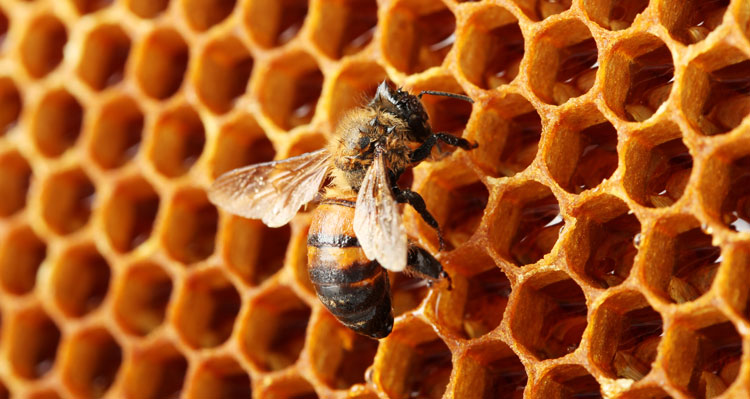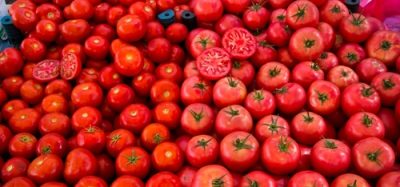Food Fraud – Are you insured?
- Like
- Digg
- Del
- Tumblr
- VKontakte
- Buffer
- Love This
- Odnoklassniki
- Meneame
- Blogger
- Amazon
- Yahoo Mail
- Gmail
- AOL
- Newsvine
- HackerNews
- Evernote
- MySpace
- Mail.ru
- Viadeo
- Line
- Comments
- Yummly
- SMS
- Viber
- Telegram
- Subscribe
- Skype
- Facebook Messenger
- Kakao
- LiveJournal
- Yammer
- Edgar
- Fintel
- Mix
- Instapaper
- Copy Link
Posted: 1 February 2017 | Alison Johnson | No comments yet
If you’re making a food claim, it is your responsibility to ensure you validate it, says Food Forensics’ Managing Director, Alison Johnson. Many problems centre on claims, often for a premium product. Where premiums are available or supply and demand is out of kilter, the risk of adulteration or substitution within the supply chain increases dramatically.


With food scandals continuing to rock the food and beverage sector, Alison is passionate about ensuring that all testing adds value to a business and is not just seen as a ‘cost’. The starting point for this is helping businesses to understand the tests that are available, what intelligence they can provide, enabling informed choices combined with business risk assessments to use the right test at the right time and doing the right thing with the test result.
It sounds simple, but ensuring test results lead to appropriate action is often poorly implemented. There is a starting point for everyone and the risk of trying to ignore the potential problems is too high a price to pay.
Having a robust and comprehensive testing regime will ensure the integrity of products, help to manage risk, and provide a deterrent to fraudsters as well as giving consumers confidence in the claims, not to mention an insurance policy for brand protection.
Businesses are generally fairly good on the historically ‘routine’ food safety tests (microbiology and chemistry; nutrition and contaminants) but are still slow in recognising the food safety risks around traceability and authenticity.
There is still huge scope for making better use of all test data to inform and cross validate risk within a supply chain. To do this requires a fresh approach to testing.
So what types of authenticity tests are available?
Origin & production system
From the location in which plants grow or animals are reared and the manner in which they are produced, they pick up an ‘environmental fingerprint’. This fingerprint is specific to the country of origin, region and production system and can be used to check if the product is consistent with the declared claims. Food Forensics uses Stable Isotope Ratio Analysis (SIRA) and Trace Element analysis in conjunction to give this information. Application examples for this type of testing include consistency with declared origin, free range, corn fed and organic production and can be used to validate paper traceability.
Quality
Products such as extra virgin olive oil have to conform to EC standards. A broad suite of testing is available to check for key quality indicators and for common adulteration (refined oils, other oils etc). Quality tests can be combined with environmental fingerprinting to check for consistency with claimed origin as well.
Don’t forget, nutritional composition and microbiology results also give you information on when, what and how products were produced – this information can be used to signpost for other traceability and authenticity tests.
Quality tests give you information on legal compliance but can also be used to signpost for traceability and authenticity.
Adulteration
Adulteration can take many forms, but one commonly investigated is C4 adulteration in honey. Honey adulteration can occur when bees are fed high fructose corn syrup or sugar instead of making honey from foraged nectar, or the honey is diluted with these products post-harvest. Most of this adulteration can clearly be detected using an AOAC accredited method. Interestingly, this testing can be combined with other techniques such as microscopic assessment of pollen to check for forage type, other methods of adulteration as well as consistency with claimed origin.
Fruit juice testing is carried out in a similar manner using isotopic water signals to discriminate fresh fruit juice from those made from concentrate.
Adulteration testing can be used to check the product and quality is what it says it is. However, it should not be used as the only check. Audits and other quality tests are all signposts too.
Speciation
Established DNA testing methods can be used to determine if the declared species of meat or fish is present in food and feed products as well as detecting adulteration of products with undeclared species. Testing using a standard suite could be employed, but looking for key risks as a routine (other species handled in plant, likely substitution species etc), then undertaking a random broader screen (a ‘detect the unexpected screen’!) may be more cost effective.
This approach provides checks for contamination, hygiene and fraud detection.
Batch match
It is possible to batch match between samples of the same batch. By profiling a specific supply, samples can be tested against this to determine if they are genuinely from the same supply. This is useful for wine, eggs, approved blends as well as specific location sourced products such as traceability back to an exact farm and great for supply chain integrity validation.
Other tests
There is a wide range of other tests available, some of which are familiar, such as nutritional composition, pesticide residues, illegal dyes, allergens, GMOs as well as a range of more specialist tests natural vanilla (rather than synthetic vanillin) and spectroscopic techniques for volatile profiles looking for adulteration and quality in herbs for example.
The key is knowing what you are going to do with the data before you test and understanding that the test result can give you signposts to other issues that may not have been the primary objective of the test. Combining evidence, irrespective of the source, ensures you get the maximum out of every test you undertake and provides due diligence as well as added value.
Once you have the right test identified, you need to look at the optimum place in the supply chain to employ it. Be clear about what you are trying to achieve. Detection, deterrent or just due diligence? This will shape where to test. Testing earlier on in the supply chain can provide deterrence. Testing at raw material intake, as an example, can provide a detection screen and will then reduce risk further upstream. Testing at point of sale or despatch can only ever be a due diligence check, a final “is my risk management process working?” check.
There is rarely just one answer. But the combination of tests and testing points will shape the information you receive and therefore the effectiveness of your testing programme. It is also worth taking into account risk assessments and previous test history, as well as any audit findings to date.
What do you then do with the test result information? Use it! Every test result, red, amber or green, gives information and Food Forensics strongly encourages businesses to move away from just ‘filing’ green results and only looking at the problem ones. In order to help their customers with this, they developed a dashboard system that enables pooling of data from multiple laboratories which can be manipulated by supplier, test type, category etc. Often for the first time, customers have been able to see where the focus areas should be, proving to be quite enlightening for some.
Pooled results can then form the basis of ‘Earned Recognition’ the principle applied by the Food Standards Agency and highlighted by Prof Chris Elliott in the Elliott Review, enabling audits and effort to be appropriately targeted to weaknesses in the supply chain.
So how can all this add value?
There are three things you need to take into account to calculate this.
- ‘How big is your company’s marketing budget?’
- ‘How big is the marketing budget of your customer?’
- ‘How does that compare to the potential reach of a negative mainstream news story?’
As Benjamin Franklin said: “It takes many good deeds to build a good reputation and only one bad one to lose it.”
The value is NOT putting yourself in a vulnerable position. Being able to look your customer in the eye and say, “we’ve got that covered, we are managing that risk on your behalf,” that is where you need to be.
Yes, it is an investment; but do it right and it enhances your product offer and can even be a point of difference. Doing nothing is not an option, the days of hiding behind ‘plausible deniability’ (if I don’t know, I don’t have to deal with it) – have gone.
The opportunity has never been greater to use testing and all the information it provides to enhance your brand, to invest in your brand protection and that of your customer. If you are struggling to justify the budget, go and tap on the door of marketing! Think differently about testing and find a way for it to add value in your business.
Biography










